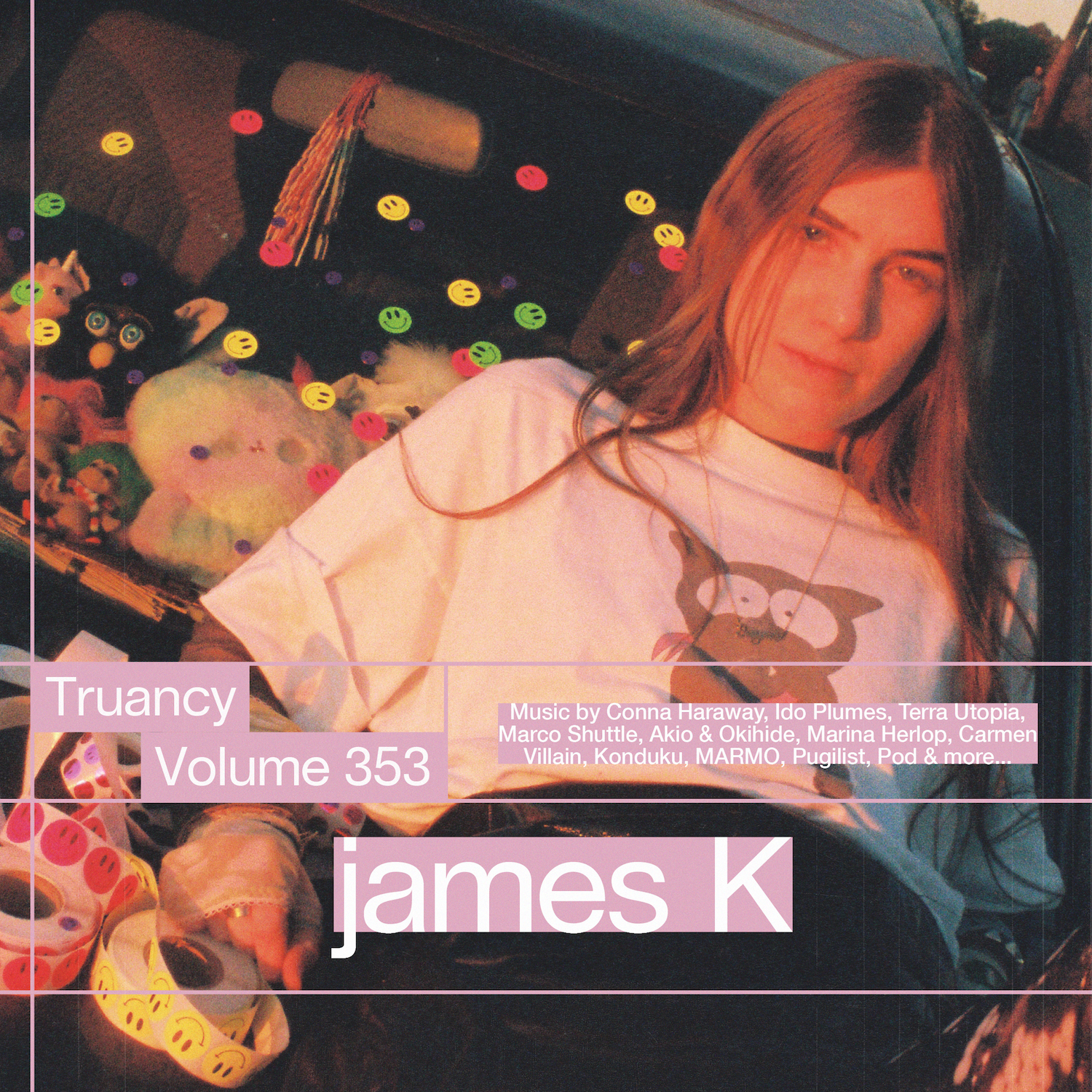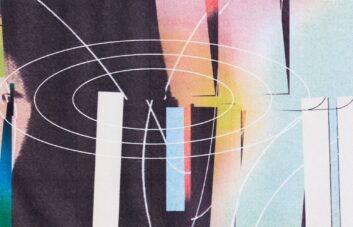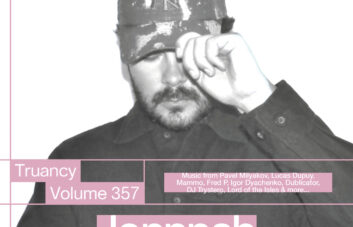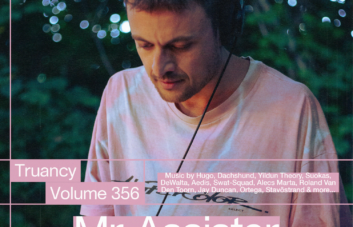There are moments when you encounter a voice so alluring, so emotionally complex, that it fundamentally shifts your understanding of music. For countless listeners, that voice belongs to james K—an artist and composer whose deeply poetic sensibility bridges worlds between tumblr fantasies and avant-garde aesthetics, LiveJournal-style expressiveness and shoegaze nostalgia. Over the past decade, this New York-based artist has established herself as one of experimental electronic music’s most distinctive figures, collaborating with boundary-pushing producers while maintaining an artistic vision that spans multiple disciplines. Her music inhabits the spaces between memory and possibility, carrying lived experience while discovering joy in moments of connection and solitude. Functioning as challenge, declaration, and celebration, her work explores the meaning of home, late-night escapism, and internal reckonings—awakening both childlike wonder and profound introspection. Rock, pop, grunge, shoegaze, and electronic elements converge in visceral harmony, heartwrenching and ethereal in equal measure.
This breadth of expression has brought her to some of the world’s most coveted electronic festivals and renowned labels including AD 93 and Incienso, in addition to her own label She Rocks! From her bi-monthly NTS Radio show “Trip Lick” to mixes gracing platforms like Dekmantel and Honcho Campout, james K has become essential to contemporary experimental music discourse, bridging experimental and accessible territories while never compromising artistic integrity. Her forthcoming album Friend on AD 93, set for release in September, finds james K at her most emotionally direct. Moving away from the veiled abstraction of previous releases, this collection represents what she describes as “a definition of love at this moment in my life, equally euphoric and grounded, gentle and safe while processing certainty, uncertainty, pain, and joy.” The collaborative spirit reflects her commitment to community—featuring contributions from producer friends whose individual talents brought the songs into new territories—while guitar serves as the common thread throughout, the instrument where she first found her voice as a child.
This evolution from her 2016 debut album PET through experimental works like Random Girl to the multimedia performance “Elektra (Scream Through The Eyes Of A Statue)” demonstrates an artist unafraid of constant reinvention. Her technical innovations—including the ingenious stethoscope microphone that literally brings her physiology into the sound—reveal someone dedicated to discovering new expressive possibilities. Her creative process remains rooted in “unbridled freedom,” always balancing intuitive exploration with meticulous precision. Central to understanding james K’s artistry is her approach to songwriting as emotional archaeology. She begins with instrumental foundations before improvising vocals using what she calls “sounds which are half-way between a word and a feeling.” Through careful editing and layering of multiple vocal takes, she builds a vast tide of emotional textures. Her lyrics emerge as collaged fragments—memories, conversation snippets, poetic pairings—deliberately maintaining multiple meanings that shift between listens.
Her Truancy Volume embodies this artistic philosophy through “a lick of a trip”—an extended version of her celebrated NTS Radio show approach that prioritizes emotional narrative over conventional mixing. The mix opens like dawn breaking through morning mist, establishing a meditative atmosphere that puts listeners in “a state of uncertain elasticity, like walking through hazy brush.” From these contemplative beginnings, the journey transforms through varied emotional territories, weaving through lush, otherworldly textures that feel both surreal and intimately familiar before building toward moments of sublime catharsis. The selection showcases her curatorial instincts through seamless sonic connections—particularly the sequence from Tristan Arp through Marina Herlop to Le Motel and Marco Shuttle, where pianos seem to emerge from the same instrument while melodies meld with remarkable synchronicity. This attention to textural matching creates what she describes as “hybrid productions,” revealing hidden pathways between disparate artists. The mix culminates with CYBERMISSION’s “Deep Hard,” her “current favorite feeling”—a romantic and radiant conclusion that embodies the emotional directness embraced in her own work.
Throughout this expansive journey, the mix captures what makes james K such a compelling artist: the ability to traverse vast emotional landscapes while maintaining perfect balance between precise electronic construction and organic unpredictability. As she explains, “It’s important to me that I don’t clean things up too much, because this can take the breath of life out of a work. The unpredictable elements are the moments that can often make it exciting and endearing.” The result feels like falling asleep beneath the summer sun—all senses enthralled by beauty and peace, offering a touching moment of transcendence in troubled times. In our interview, james K reflects on the creative process behind Friend, her relationship with nature as creative catalyst, and her approach to performance as creating invisible fields of connection, operating from what she describes as “a more grounded and core-settled place” while using music to process love in its most expansive sense.
Hi, James K! Thank you so much for creating this beautiful mix for TRUANTS. How are you and what have you been up to lately? “Hi! I’ve been traveling a lot lately, playing shows, working on various projects—music and visual, and spending as much quality time with my cat, Pingu, as I can.”
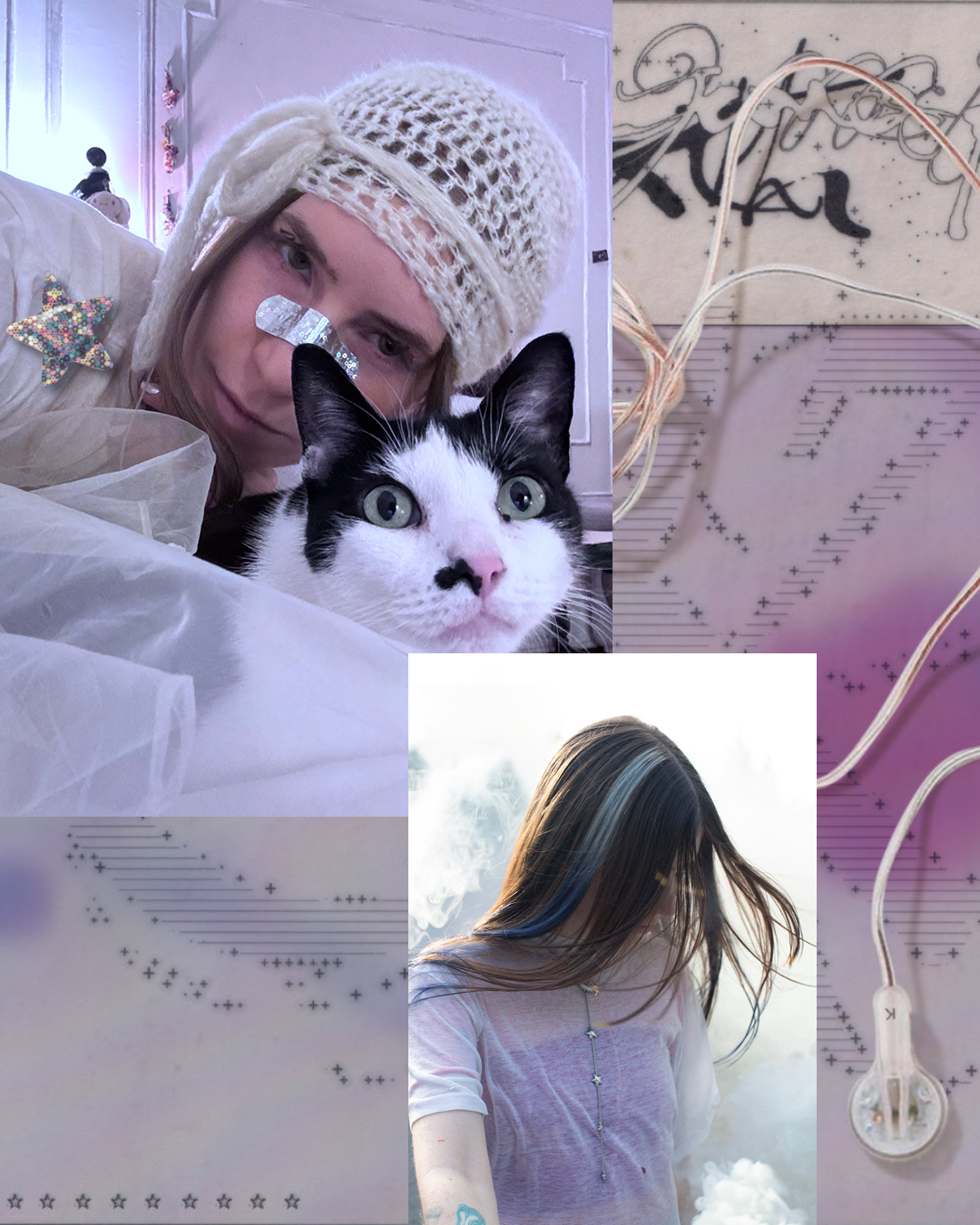
What’s been inspiring you recently, musically or otherwise? Anything in particular bringing joy or excitement to your creative process? “My external inspirations refract quite quickly, I’m always taking in flecks and bits along the way. Visually, over the past months I’ve become more habitual and organized with my digging efforts, via places like pinterest and are.na, and my long standing tumblr page (all accounts are various nonsensical spellings of ‘mysterious underground’). Musically, I’ve been really inspired by this private streaming and file sharing platform my partner setup on a little server in our apartment. It’s just friends sharing music they’re digging. The simplicity of sharing music you love with a few friends being the basis of that platform in the over saturated world we live in has really invigorated music discovery and sharing for me. This platform is super powerful in its simplicity and taking music sharing back into the hands of peers, and it’s a model I hope others will take on as we move into the future. My joy has also been coming from a really good pillow I just bought.”
Your highly anticipated new album, Friend, was recently announced on AD 93. What made this record feel important or necessary to create? What concepts and collaborations shaped it, and what musical directions were you exploring? “My urge to create is constant and it always feels necessary because it is how I am processing life, that’s always been the case for me. This body of work became apparent while in the process of making a lot of music both on my own and collaboratively. I started to see connections between the songs, and realized that I would like it to become a larger body of work to encapsulate this moment in time and place both internal and external for me. Friend is a state of being this record is enacting, and it is a definition of love at this moment in my life, equally euphoric and grounded, gentle and safe while processing certainty, uncertainty, pain, and joy. I was in a place mentally/spiritually where I felt safe in myself and realized in my experiences, and I was from this place, where I wrote the work, which is an exploration of that love and understanding. Collaboratively, I worked with a number of friends who are all incredible producers on various tracks, whose individual and unique skill sets brought the songs into another sphere I would not be able to reach on my own. We are all friends, and it was extremely fluid and fun. Leaning into this collective spirit is also integral to this record, it’s about making and being in this space with the ones you love, and also creating that space for yourself. Sonically, it’s like most of my other musical output, in that it’s quite diverse and makes use of collaging various elements from electronic sound design and dance to more live acoustics and rock, to more trip hop, ambient, and pop. The guitar is the common thread throughout every track, an instrument that means a lot to me because it was the first one where I really found my voice as a kid. These are songs, and I wanted to play with song structure as well. The whole work is quite intimate and emotionally driven, but unlike my last album, which was veiled more in layers and abstraction, this record is more direct. That sense of clarity is the basis for accessing a direct thread to the emotions I’m transmitting. I’m not into linear ideas or final statements, un-fixity is more my school of thought, the reason why interviews are extremely unnerving to me, and probably why I also talk so much (I’m always rethinking the last thing I said) and most of my work to date has been about leaning into this ideology—that we are constantly shifting and your ‘self’ lies amorphous, but I think importantly with this record, I’m letting you access the feelings more directly and see into me a little more.”
The music video for the new record’s first single, ‘Play’, has this beautiful contrast between intimate home moments and surreal nightlife scenes, all with this dreamlike quality. Could you talk about the creative process behind it and what you wanted to convey? The lyrics “hold on to your home when you’re up at night or lose it” were particularly resonant—what inspired that line? “The concept was something me and Isha Dipika Walia arrived at. We wanted to form a narrative around a girl gang, with the Friend symbol, which is also on the cover of the album artwork—a fuzzy vibrational spiral-like symbol that embodies multiple references from a leash to an embryo, is the brand of sorts—there’s a bit of a coven or cult feel to the mythology around it. About a year ago I was working on artwork for an EP I made which I never released, and I was thinking a lot about the title of Led Zeppelin’s IV, which is those 4 symbols (for each of the members), and this EP I decided to also to use made up symbols for the title, so with Friend I wanted to do this again and have a made up symbol as the alternate title. The symbol appears throughout the video, and this video was a basis for the world building and visual narrative around the record, so a lot of these themes are seen throughout the rest of the graphics I have released and will be releasing in the upcoming months via the vinyl and other media formats, merch, and all the other graphics. This visual world is a whole other element for me that I spend as much time on as the music itself, and it usually takes place after I finish the sound, so I’ve been working on this (and I still am now) with Isha since late last year. The song is actually a diss track of sorts, I was writing on various people who have ‘played’ me, and also about my power and ground being regained through it and that writing process. I knew when I wrote the song I wanted to be gaming on my old ps1 console, since this song is somehow reminiscent to me of childhood and going back to a state of unbridled freedom—it is playful, and it’s about playing/being played, the title is ‘Play’ so yea we gotta have playstation. Also I’m extremely inspired by the playstation ads of the 90s, some incredible directors were onboarded for those, truly some of the best adverts ever made in my opinion. The inside outside locations in the video felt necessary, and describes the dichotomy of the song for me, which is both extremely personal and an intimate surge of emotion, while it is also very external and takes you into your body and the external bodies, running through the streets at night-vibe. The song is also about the people who you trust to be around, and I wanted to include my friends in it, because this is the heart of the record as well, the connections to myself and to others that feel like magic. This line ‘hold onto your home…’ is a reminder to find and hold onto the internal core of yourself, in times of pain there is still a core of love indefinable and real and holding onto and leaning into that space is what this record is enacting, cos just as beautiful as this life is, it’s also equally disturbing and vicious and if you wander too far on the outside, you can lose yourself in it.”
From field recordings of insects to organic textures and ethereal vocals, it feels as if nature has a distinct presence throughout your work. Could you talk about your relationship to nature and its role in your sound? “Spending time in nature was a big part of my childhood, and remains something essential to me to feel I’m grounded in my life experience. The city inspires me greatly and the frenetic and collaborative energy fuels my urges and strange curiosities with society, but nature has always been an equally creative source. I spent any time off from school when growing up in the wild across America, mountains, forests, and deserts. Returning to these spaces, and temporarily exiting from the influence of other humans and our society allows me to reconnect with a child element of myself, where my creativity comes most lucidly and unadulterated. Any free time I have now, I try to go into nature. When I get there, I find my true self, a child self, which is my most creative and ‘pure’. Ideas run wild in this space, and time is infinite, as are the chorus of ‘voices,’ both external and internal. In my sound, I have directly used field recording from nature, or try to recreate nature through digital interfaces, but ultimately I’m channeling emotions to create textured landscapes and narratives with layers of time and space. The feeling of being alone in nature and the vastness of layers, the unknown you feel when you take yourself out of the societal grid, is something I’m aiming to get closer to, to reflect in my music.”
From the early days of learning guitar to your current electronic experimentations, what fundamental aspects of music-making have remained essential for you? “Although I’ve explored many methods of producing and creating music throughout my life, my internal process of making has remained essentially consistent. First I have the vision or idea, and then the allowance I give myself to chase the idea, followed by the flow state I slip into to tune and bring that idea into focus. I feel like this state is akin to dreaming, guided by emotion, where subconscious fragments of memories, thoughts, references, blend together to create this soupy dream-logic narrative. In essence, I let myself explore with unbridled freedom, always mediating the line between self acceptance, playfulness, and a critical lens. The fundamental aspect of making is your relationship to yourself, and how you hold on or let go to move forward and grow.”
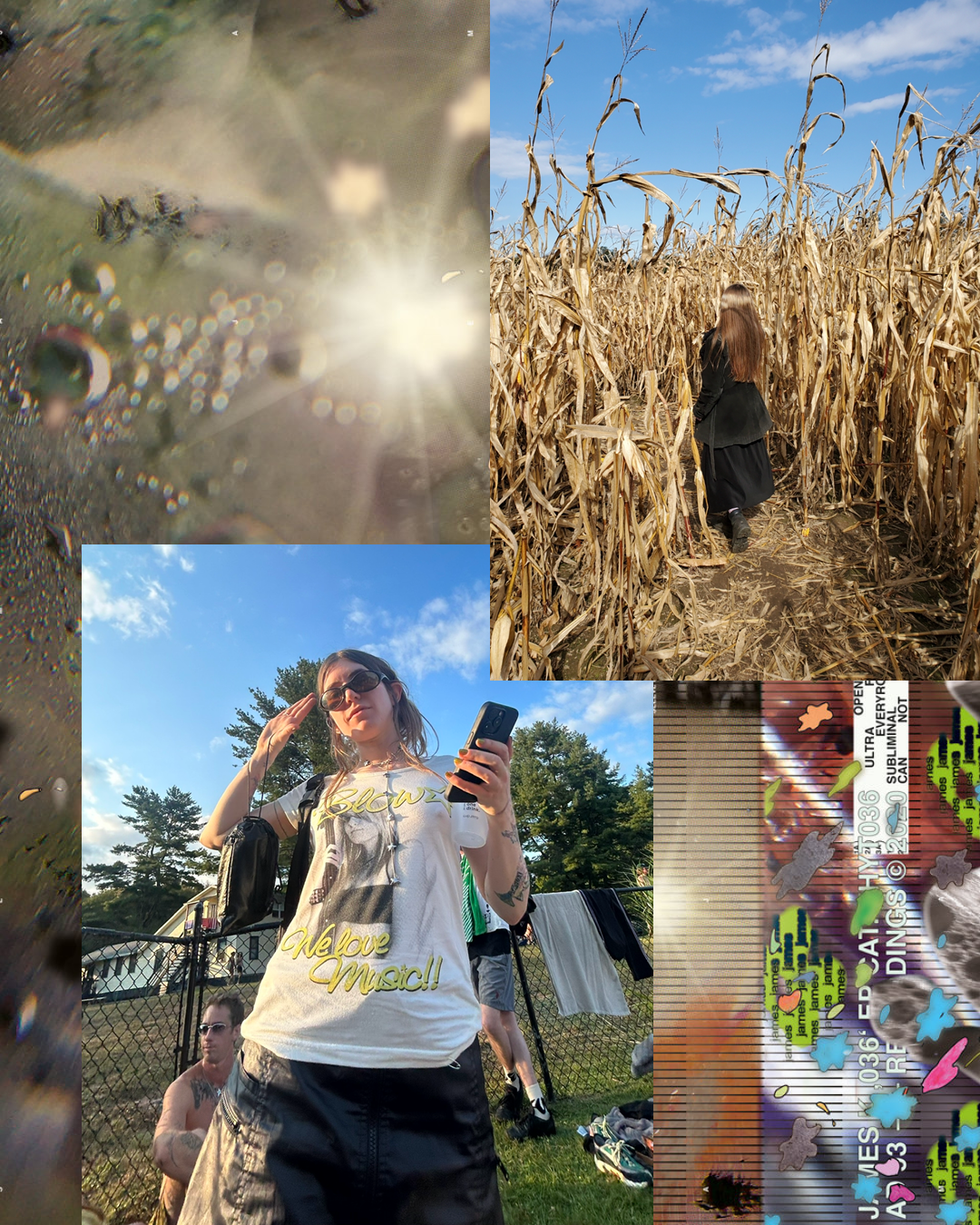
Your ingenious vocal techniques, such as using the stethoscope microphone, literally bring your physiology into your music. How do you discover these innovative methods? “I’ve been building and using contact mics and various sensors over the years to amplify the body. My initial interest probably came from seeing these types of devices being used in the Providence (RI) noise scene which was a source of inspiration and community I found myself in while living there in the late aughts—a lot of the musicians and artists involved with this scene were using contact mics, attaching them to various resonant objects and routing that amplified signal into other fx sources—modular rigs, pedals, etc. My mom is a pediatrician and she had an old stethoscope I asked to use to build a mic from. I mounted a small electret mic at the bottom of where the stethoscope connects to the silicon tube that eventually links to ear ears, but iInstead of connecting to the ears, I just run the mic’s cable through the tube so I can connect it to effects for processing. When I’m singing with the stethoscope mic, I’m holding it up to my throat, near my voice box, the vibrations are the sound you hear. The sound this produces feels more internal than external; the voice ‘inside of the body.’ Around the time and after the time I made this, I made some more ‘inside the mouth mics’ and wrote a 4 channel piece using these abject mouth sounds. I was very interested in the voice being more a sound attached to the body, versus the ‘purity’ of the classical pop voice, which aims to get rid of all these indications of a body.”
There’s such a compelling tension in your work between precise electronic construction and organic, unpredictable elements. What is your process for exploring this duality in your sound? “I go into making anything with a full force of feeling, and I let myself freely explore the ideas I’m working with, no matter the medium (sound/visual/etc). Most often, in order for me to feel I’ve achieved the full intention and depth of any of these ideas, I’m driven to work with (sometimes obsessive) precision in editing the layers and details. I’m always balancing between these two spheres—the intuitive, organic side and the precise. It’s important to me that I don’t clean things up too much, because this can take the breath of life out of a work. The unpredictable elements, or things that might be ‘wrong’ are the moments in a work that can often times make it exciting and endearing.”
Your voice occupies such a unique space in contemporary electronic music—it’s deeply present yet never overpowering. How do you achieve this balance? Have any particular artists inspired your approach? “I’ve been singing since before I can remember, and did so with a natural urge. I have never been a belter. I’ve always had a softer, more subtle, yet dynamic voice. For me it’s always about holding emotion, and this is the presence, translating and emitting that emotion onto another. It’s what I like about my favorite singers, people like Whitney Houston, Tracey Chapman, Kate Bush, Elizabeth Frazer to name a very few, though my inspiration as a kid was not coming from other singers, this wasn’t until much later, really I just saw it as my instrument and I loved to play it. When I was in my teens and twenties, I began to play around and ‘try on’ voices, karaoke, and in doing so, learn how a particular singer is achieving a sound, by embodying their technique. After playing around with this enough, I’ve sort of just naturally amassed a substantial range of techniques and styles I find I can draw from, but the desire to sing came naturally when I was quite young, so I’ve always felt I’ve had my voice, guided by emotion and wild desire to sing, which like any instrument, I’ve just become more practiced with over the years.”
You’ve previously spoken about music as a meditative practice for examining difficult moments or feelings. What are some experiences or emotions you’ve been processing through your recent productions? “Recently, I’ve been processing from a more grounded and core-settled place, so the emotions have felt less painful because I’ve felt more strength to accept and feel them than in other times throughout my life. I’ve endured loss over the years, which gave me perspective and helped me grow. Those experiences have moved me toward becoming more aware of the love in myself and surrounding me. Choosing to lean into that while feeling and accepting the pain that is within me and surrounds us has been a major aspect of the processing I’ve been doing in my work recently. I am hypersensitive, and I think somehow this translates into the music I write, it’s really an x-ray to my feelings, right now, I think for me it’s about translating love, in the all-encompassing sense of that word—pain and bliss, understanding and confusion, connection.”
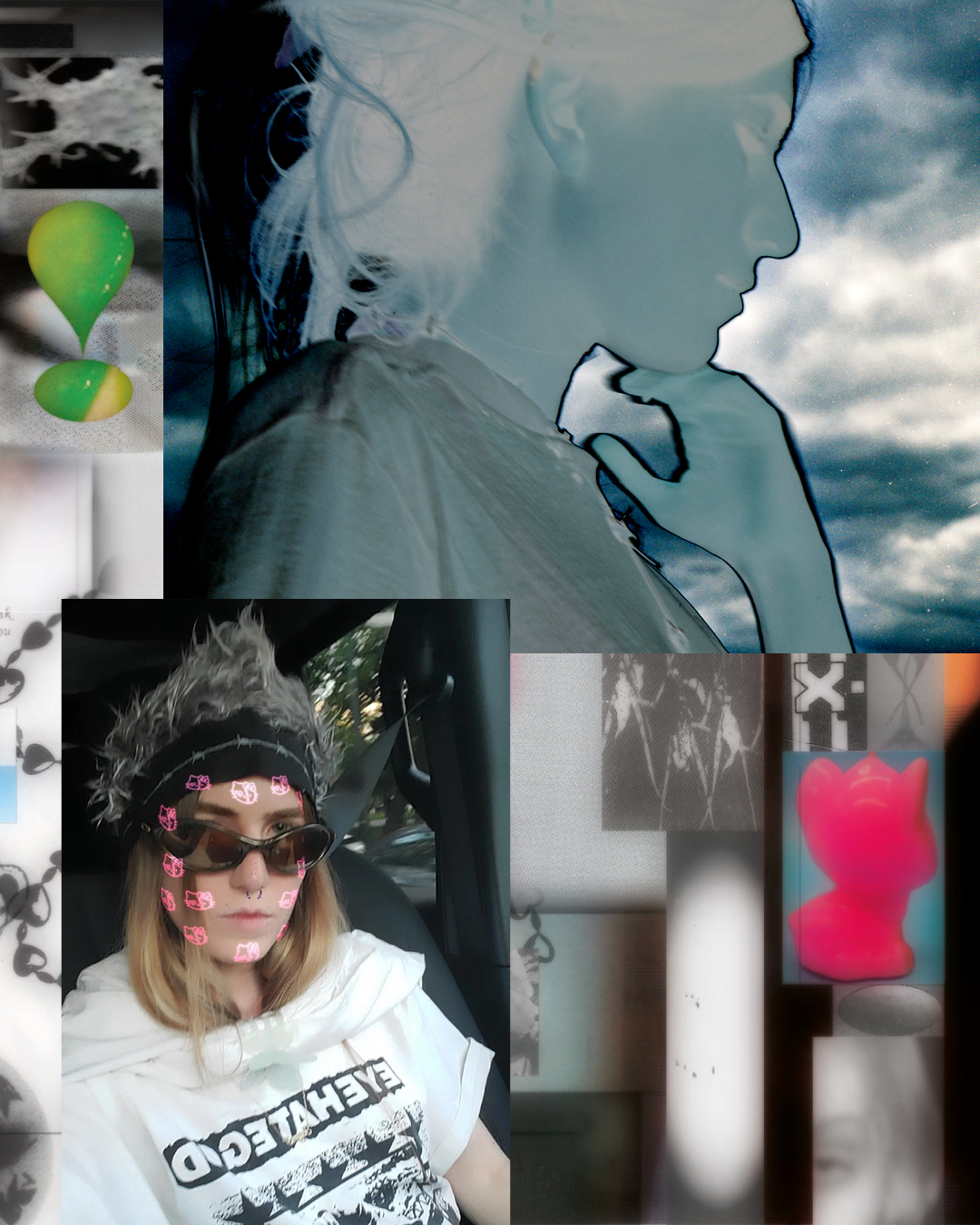
Your multimedia approach thoughtfully integrates visual art, video, and sound into unified worlds. How do these different mediums inform and inspire each other in your process? “My approach to making is fairly similar within all of these mediums, each medium just being another shade of the language I am building. I wouldn’t say any of these necessarily inform the other, they are all just different channels to express ideas, each having different purposes and being vessels for types of information.”
Your work has expanded from solo electronic productions to scored multimedia collaborations like ELEKTRA. What draws you to these larger ensemble works, and how do they challenge your approach as both a composer and performer? “Larger works, like installations, or site specific works I have done, Elektra being one of them, challenge my practice in many ways. I often have ideas for projects that fit a bit outside of the traditional music venue or recorded album context. My background is in art, and I’ve been making work for various contexts for a long time, and I have many ideas which I don’t execute until the context or timing or funding is right. In the case of Elektra, I was writing a scored composition for four players, created out of the course of multiple improvised practices in a site-specific space. Based on those early sessions, I set out to write a four part score, which would serve as more of a ‘map’ for improvisation rather than adopting a straightforward ‘note for note’ approach. I had been researching graphic scores for improvisation, and the concept for work itself was inspired by an Anne Carson translation of Sophocles ‘Electra,’ so I was also thinking about translations in that work, and how the score could remain fluid over time, fully unique in each iteration of it being performed. This was a commissioned piece, I had the ideas to make a work about Elektra for a long time, as well as an interest in making a long-form improvised score, and when I had the opportunity and space to do so, the research and urge to fulfill this vision started to come into focus. It is always challenging to go into spaces of unknown in your practice, but it is something I enjoy doing. Ultimately, you will rely on your skills and abilities and the new things you learn and research are digested through those, so I’m making my version of the works I research—I’m not good nor do I ever try to fully emulate a sound or method, I just integrate them into my natural and practiced methods and use the inspiration as a way to shift my perspective and challenge myself. Before I started this work, I had a band with two of the players I enlisted in this particular work, which was completely improvise-based, so my head and practice was already in this space and interested in delving into it more by making a score for this type of practice. Improvising with musicians is like learning how to converse solely with your instruments—extensions of your voice. You can become so fluent speaking this way, that full conversations via sound occur. Making work with friends also without any pressure or particular ‘purpose’ has always been an important part of the fun I have in making music, and giving yourself a dedicated amount of time and space to do this with friends is very important to my practice.”
As live performance often requires translating studio intimacy into public space, how do you maintain emotional authenticity across these contexts? “I always write songs and record my vocals alone. It is extremely intimate and personal, and any time I’ve tried to do this in a public setting, even with just one or two friends in a studio, I feel exposed, sometimes dissociated by the energies of others. There’s a certain type of focus and channeling that goes into writing songs that requires solitude for me. Once I have realized the song however, sharing and performing it live is something I really enjoy doing-channeling the emotion and letting the sound form an invisible field of connections for people to sit in and experience (if they want to). There is always this dual mode I’m operating in when I’m playing live—the emotion and the precision, right and left brain balance, and when the sound is off, this can really throw off the emotion aspect, so I’ve taken to mixing everything myself these days and giving the sound people a stereo signal.”
How have your experiences in different creative cities—from New York to Berlin—shaped your artistic approach? Looking back at your early discography through your recent productions, how do you see your artistic voice evolving? “I was born, raised, and have lived in NY most of my life, and have experienced many iterations of the city—music/art scenes, communities, etc. That said, my journey has certainly been majorly informed by the two other cities I’ve lived for a significant time in—Providence and Berlin. I lived in Providence during college and for some time after, and the city shaped my artistic practice greatly. The unbridled freedom of the noise scene that existed at that time fostered and encouraged unlimited exploration in my art. I truly grew into myself and my art practice became more defined there. When I moved back to NY afterwards, the scene there was vibrant as well and still quite DIY. As I became more interested in dance music, I decided to move to Berlin to be closer to a more developed club culture and infrastructure, something that wasn’t present in NY at the time—to listen to music on sound systems and in spaces it was intended for. Many of my friends in Berlin worked at a popular record shop at the time, and I was touring some cities for the first time, exposing myself to many different scenes. I moved back to NY 7 years ago, and when I returned, the infrastructure around club music had begun to flourish more and I would say is more vibrant and fresh-feeling now than in cities like Berlin, so it’s been wonderful coming back. Ultimately, I am in conversation with people all over the world and inspired by music beyond geographical lines. The physical and cyber space I find myself in at the moment is quite accepting and fostering of my practice. I always gravitate towards rave scenes because this is where I find the people who love all kinds of music, and the people looking for alternatives in how we connect with our surroundings and with ourselves, and it’s in these spaces I feel the most challenged and accepted, which is the best place for me creatively.”
Your various artistic collaborations and long-standing label relationships seem to have significantly shaped your career—what have these experiences taught you about artistic creation? “Collaboration is important to me. I’m always learning new methods, ways of working and approaching art making, mentally/spiritually as well as techniques through collaboration. There is no ‘right’ way of doing something, and everyone has their own ways of getting from point A to point B, and collaboration illuminates this. I put less pressure on myself when I collaborate with others and let things fall into place with slightly less of a tight grip. Essentially, collaboration is a reminder to have fun a lot of times! This ease on myself and the creation process I find when collaborating, I then try to transfer into my solo practice. I am often times having an idea that i need to find a way to execute, and finding a method to do so, which is always shaping and adding to a lexicon of techniques. Going on that journey of learning something new to execute an initial idea, will then inspire and lead me in new and unexpected directions, but I have to remember to enjoy that process and let it flow, which is something that comes easier while collaborating. The process of creating, is itself always teaching and shaping me, a lot of making is just getting into the right mental state to allow yourself to speak freely and trust yourself without (too much) judgement.”
Could you describe your process for writing lyrics? What ideas or themes are important to represent in your compositions? Are there any artists that have been especially influential? “The lyrics come after I’ve got a strong base, instrumentally and melodically, for the song. Once I feel there is enough of an idea down, I will sing over this, improvising to create swells of melodies, and capture feeling. I’m usually singing a mixture of words and nonsensical ‘noodle’ language, sounds which are half-way between a word and a feeling. Once I’ve recorded what I feel are enough takes to build something from, I’ll start editing them to create the structure for the melody and song. This editing process where I’m creating the overall structure for the vocal melody, thinking about how the vocal tones and layers will sound, and what effects and processing they need, as well as layering and sampling pieces of the voice to create textures, vocal ‘candy.’ After this process is when I can really hear the song and its intention, and this is when I begin to write the lyrics to shift to focus that intention further. This process is multilayered; I’m extracting words from this made up emotional language, trying to bring into focus perhaps the meaning I was getting at, but also searching for words to contain those emotions. I’m not interested in writing linear narratives, or didactic songs, my lyrics float between poetic word pairings, thoughts in my head, memories, phrases spoken in conversation between friends, myself, or things i’ve read or listened to. Like my music, I’m collaging. I try to keep the lyrics in a state of suspense, where multiple meanings exist, and the sense of resolve can change between listens. When I first started writing songs on guitar as a kid, I actually would try to write more traditionally, with a specific idea in mind and finding the words to express one idea—though i’ve always been more of an abstract lyricist than a literal one and this was never natural for me. Ultimately learning how to produce, and the editing process itself has just pushed my natural inclination for abstraction and un-fixity further. Also relating to this multi-layered nature; I record many many vocal takes which I create comps of, of those comps I usually have 2-4 full takes that I keep and layer, in addition to layers which are more extreme processing, sampled bits of vocals—sometimes I’m even having multiple vocal melodies and lyrics existing in a ‘round.’ All of these many layers of vocals are performances in time, the vocals alone are this massive haze of emotion textures of time. I’m usually approaching the other elements in the music similarly, with many details and layering, to create very rich soundscapes. As far as influence, I think hearing both Cocteau Twins and Beck as a kid gave me this permission that words could be open and misused or repurposed and re-contextualized to create emotion—that narrative can be more of a collaged dream-logic, which to me always feels closer to the ‘truth’ of the song, which is most importantly to me, the emotion not the logic.”
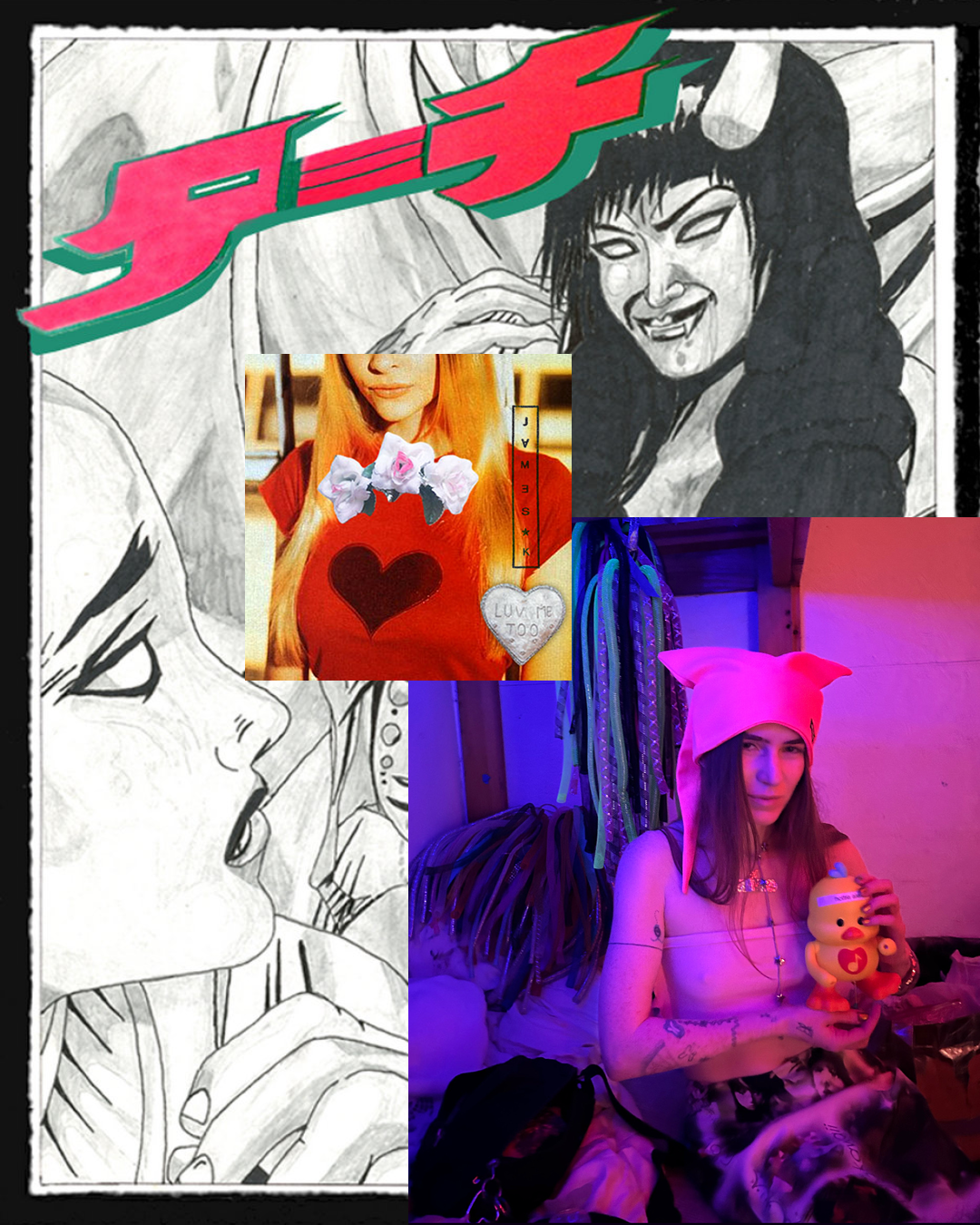
Your Truancy Volume mix builds from darker, more tense beginnings into something tender and cathartic. How did you approach this emotional transition? Was there a particular concept or mood you wanted to convey? “My objective was to make a longer form ‘Trip Lick’ (my NTS radio show) mix for this series. The mixes I’ve made for my Trip Lick show over the years are all about twists and turns, a ‘lick of a trip.’ I started this mix in a meditative, pulsing place. I was thinking about putting the listener first in a place of meditative contemplation. I think important journeys often start with a feeling of tenseness or uncertainty in order to prepare the traveler for the unknown to be explored. So, I wanted to set the stage by putting the listener in a state of uncertain elasticity, like walking through the hazy brush. To me, these tracks are not dark, in the sense of them being solemn, but have a brush of warmth, like putting a little fleece blanket on your back while you go into this strange unfamiliar and uncanny forest. Then, after the confusion of unexpected characters or events settles, there is a moment where a sense of calm rushes over, deep, when you realize the love encompassing, is completely infinite. The emotional transition in this mix, guided by luxurious melody and sublime emotion, is this moment I wanted to convey. I go in and out of these types of states throughout the mix, the point being to create a mental and emotional journey that I’m taking you on—between contemplative grooves, to more intentful listening, to letting the euphoria rush over and the feels consume you. It’s a trip.”
Were there any moments while working on this mix where unexpected connections emerged between tracks, or any particular tracks that felt essential to include? “Yes definitely! The section: Tristan Arp>Marina Herlop>Le Motel>Marco Shuttle. The pianos almost played perfectly together between the first two tracks as if they came from the same exact instrument, and then the melodies merging from the second two, into the quiet tampering of the drums in the last two, which felt so similar/of the same sound and textural space. Beyond mixing melodic keys, I’m of course matching certain sounds within songs to create hybrid productions, and I find this works especially well with more textural works. This sequence was a moment I felt was a synergetic example of that notion. There were a few songs that felt essential to include, as is usually the case with me since I view my mixes as diary entries—descriptions of a moment in time. I’ve been rinsing the Hesaitix record since its release, so I wanted to include that, and my good friend Lazar’s unreleased Larry Termite song forthcoming on the label Anno, fit nicely to mix into it. I included the ‘Ether’ Hoodie x james K edit by J.Ludvig III, which might be the only instance of me ever including a song of mine in a mix! I love his edit of that track very much and I’ve been playing it out quite a lot. He sent it to me last summer and apparently that’s him drumming live, which is insane. Finally, I knew from the beginning I was going to end the mix with Cybermission’s ‘Deep Hard’ because it’s fun, beautiful and real, and my current favorite feeling.”
What are you most looking forward to this summer? “I’m very much looking forward to some downtime with friends and alone deep in nature, to drop out and listen.”
james K: Linktree, Instagram, Bandcamp, She Rocks!, Soundcloud
You can download Truancy Volume 353: james K in 320 kbps and view the full tracklist on Patreon here. Your support helps cover all our costs and allows Truants to continue running as a non-profit and ad-free platform. Members will receive exclusive access to mixes and tracklists. We urge you to support the future of independent music journalism—a little goes a long way. If you need any IDs though, please leave us a comment on the Soundcloud link and us or james K will get back to you with the track :)

